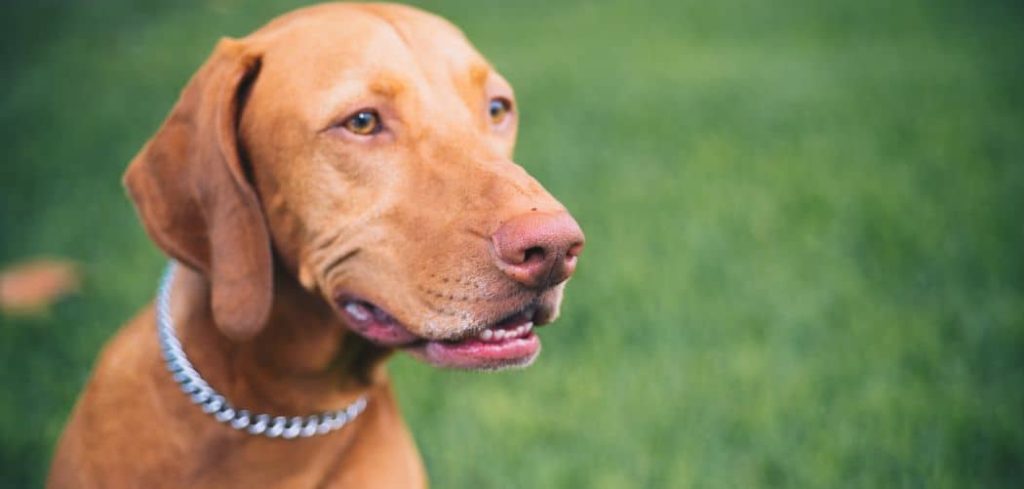If your dog is drooling excessively and not eating, it’s more than just a picky moment or temporary stress—it could be a sign of an underlying health issue that needs attention.
While mild drooling can be normal in some breeds, excessive drooling combined with appetite loss often signals pain, nausea, or systemic illness.
We outline the likely causes of excessive drooling and appetite loss in dogs, what you can do at home, and when to seek veterinary care.
Dog Drooling Excessively and Not Eating: Why It Happens
A dog drooling excessively and not eating is often caused by nausea, dental problems, toxin exposure, oral injury, or systemic illnesses like kidney disease or infections. When a dog is drooling excessively and not eating, it typically means their body is reacting to discomfort or distress—whether it’s a sore mouth, a sick stomach, or a more serious internal condition. Drool is the symptom you see, but the root cause often goes much deeper.

Dog Drooling Excessively and Not Eating: Common Causes
Dental Disease or Oral Injury
Excessive drooling is a hallmark sign of dental trouble. Dogs with a broken tooth, gum infection, abscess, or oral ulcer will often drool heavily due to pain and inflammation.
Because eating causes additional discomfort, they may avoid food altogether.
Check for signs like bad breath, swollen gums, bloody saliva, or pawing at the mouth. Left untreated, dental issues can lead to deeper infections affecting the heart and kidneys.
Nausea and Gastrointestinal Upset
Nausea often causes dogs to drool excessively and refuse food. This can result from eating something irritating, such as spoiled food, fatty table scraps, grass, or even toxic substances.
In some cases, it may be the early sign of a gastrointestinal virus or a more serious digestive issue.
Watch for lip licking, gagging, vomiting, or lethargy in addition to the drooling and appetite loss.
Mild nausea may pass, but persistent symptoms point to a deeper issue needing medical care.
Related: Dog drooling and not eating (Causes and when to worry)
Toxin Ingestion
If your dog got into something toxic—chocolate, xylitol, cleaning products, certain plants, or human medications—excessive drooling is often one of the first warning signs.
This may be followed by vomiting, diarrhea, shaking, and refusal to eat.
Even a small amount of certain toxins can be life-threatening. If you suspect your dog ingested something harmful, treat it as an emergency.
Contact your vet or poison control right away and bring any packaging for reference.
Oral Foreign Object
A small stick, bone fragment, or piece of a toy lodged in your dog’s mouth or throat can cause irritation that leads to constant drooling and refusal to eat.
Dogs may paw at their face, gag, or appear restless.
Inspect the inside of your dog’s mouth carefully—if it’s safe—and look for lodged objects, bleeding, or swelling.
Never attempt to remove anything stuck in the throat. Instead, contact your vet immediately.
Liver or Kidney Disease
Dogs with advanced liver or kidney disease often exhibit drooling due to toxin buildup in the body.
These toxins can trigger nausea and reduce appetite.
You may also notice lethargy, vomiting, bad breath (often with a chemical odor), or changes in drinking and urination habits.
Senior dogs are particularly at risk. If you’ve noticed a gradual decline in appetite and increased drooling over time, blood tests are necessary to assess internal organ health.
Heatstroke or Overheating
Excessive drooling and loss of appetite may also be caused by heatstroke, especially in warm weather or after strenuous activity.
Panting, drooling, and weakness are early signs, which can escalate to vomiting, confusion, or collapse.
Brachycephalic breeds like Bulldogs and Pugs are especially vulnerable.
Move your dog to a cooler area, offer water, and seek immediate veterinary help if symptoms continue.
What to Do if Your Dog Is Drooling Excessively and Not Eating
If your dog is showing these symptoms, here are practical steps you can take at home:
Inspect their mouth gently for signs of injury, foreign objects, or swelling.
Remove access to food temporarily and observe for signs of nausea or vomiting.
Offer ice cubes or water to prevent dehydration without stimulating nausea.
Avoid treats or rich foods that may worsen digestive upset.
Keep your dog calm and comfortable in a quiet environment.
Observe closely over the next 6–12 hours. If symptoms persist or worsen, call your vet for next steps.
When to Call or Visit Your Vet
Call your vet immediately if:
Drooling is profuse and lasts more than a few hours.
Your dog refuses food for more than 24 hours.
Vomiting, diarrhea, shaking, or lethargy accompanies the symptoms.
You suspect your dog ingested something toxic.
You observe bleeding or swelling in the mouth.
Excessive drooling isn’t just a mess—it’s often the visible clue to a much deeper problem that requires treatment.
Related: Old dog Drooling and Not Eating (Causes and what to do)
Key Takeaway
When your dog is drooling excessively and not eating, don’t dismiss it as just a fluke or picky behavior.
Dogs don’t stop eating or drool excessively without a reason—and that reason often needs your attention.
Whether it’s a sore tooth, upset stomach, or something far more serious, your dog is depending on you to recognize the signs and act fast.
If you’re ever in doubt, a quick call to your vet is always better than waiting too long.
Your early action could be the key to a faster, smoother recovery.
